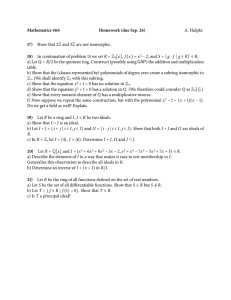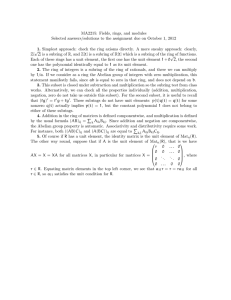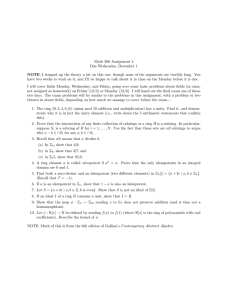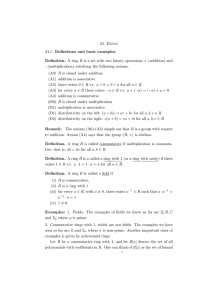Ring
advertisement
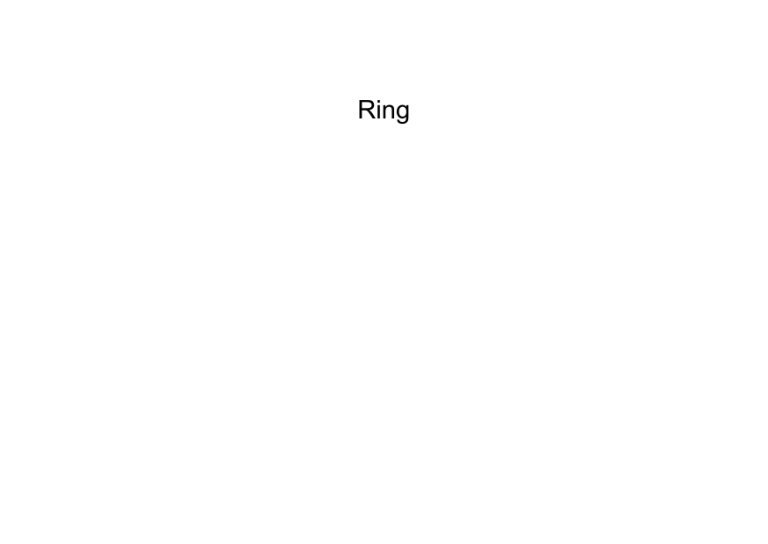
Ring
A non-empty set R with two binary operations, addition
(denoted a+b) and multiplication (denoted ab), such that
for all 𝑎, 𝑏, 𝑐 ∈ 𝑅:
(1) 𝑎 + 𝑏 = 𝑏 + 𝑎.
(2) (𝑎 + 𝑏) + 𝑐 = 𝑎 + (𝑏 + 𝑐).
(3) There is an additive identity 0. That is, there is an
element 0 in R such that 𝑎 + 0 = 𝑎 for all a in R.
(4) There is an element –a in R such that
𝑎 + (−𝑎) = 0.
(5) 𝑎(𝑏𝑐) = (𝑎𝑏)𝑐.
(6) 𝑎(𝑏 + 𝑐) = 𝑎𝑏 + 𝑎𝑐 and (𝑏 + 𝑐)𝑎 = 𝑏𝑎 + 𝑐𝑎.
Commutative ring
A ring with commutative multiplication.
Unity or identity
A nonzero element that is an identity under
multiplication.
Unit
A non-zero element of a commutative ring with unity
that has a multiplicative inverse.
Direct sum of rings
𝑅1 𝑅2 …𝑅𝑛 = {(𝑎1 , 𝑎2 , … , 𝑎𝑛 )|𝑎𝑖 ∈ 𝑅𝑖 }
with componentwise addition and multiplication.
Rules of multiplication in a ring
Let a, b, and c belong to a ring R. Then
1.
2.
3.
4.
𝑎0 = 0𝑎 = 0.
𝑎(−𝑏) = (−𝑎)𝑏 = −(𝑎𝑏).
(−𝑎)(−𝑏) = 𝑎𝑏.
𝑎(𝑏 − 𝑐) = 𝑎𝑏 − 𝑎𝑐 and (𝑏 − 𝑐)𝑎 = 𝑏𝑎 − 𝑐𝑎.
Furthermore, if R has a unity element 1, then
5. (−1)𝑎 = −𝑎.
6. (−1)(−1) = 1.
Uniqueness of the Unity and Inverses
If a ring has a unity, it is unique. If a ring element has a
multiplicative inverse, it is unique.
Subring
A subset S of a ring R that is itself a ring with the
operations of R.
Subring Test
A nonempty subset S of a ring R is a subring if S is
closed under subtraction and multiplication---that is, if
a-b and ab are in S whenever a and b are in S.
Trivial subring
{0}


